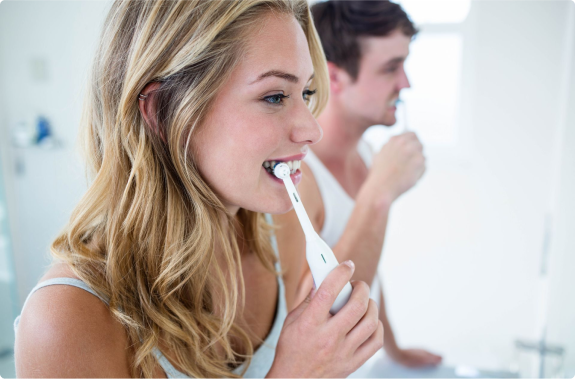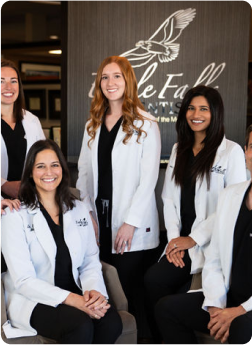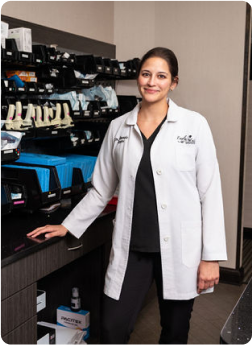Post Therapy Instructions
Therapy Instructions
The following are general instructions for you to follow after specific treatments. If you have additional questions, need clarification, or your procedure is not listed, please contact us.
Reduce your activity as much as possible for several hours. Avoid eating, drinking and unnecessary talking. Do not rinse mouth or brush teeth immediately following your procedure. These activities may hinder the formation of a blood clot, which is necessary for proper healing.
To ease recovery from your dental visit, try the following the simple instructions below.


To Control Bleeding
Immediately following the procedure keep a steady pressure on the bleeding area by biting firmly on a moistened gauze pad placed by your doctor or his assistant. Pressure helps reduce bleeding and permits formation of a clot in the tooth socket. Gently remove the compress after 45 minutes and replace it with a fresh gauze pad every hour or as needed. A trickle of blood is normal but if there is a persistent oozing, replace the gauze pad. Within 24 hours you may resume regular oral hygiene.
To Relieve Pain and Swelling
Immediately following your procedure begin taking any medication as prescribed or directed by your doctor or assistant, to minimize discomfort. Application of an ice bag can also relieve discomfort as well as swelling.


Maintain a Proper Diet
Have your meals at the usual time. Eat soft, nutritious foods and drink plenty of liquids – with meals and in between. Have what you wish, but try to avoid, hard, crunchy foods, anything with small seeds or anything with husks (i.e. popcorn).
Oral Hygiene is Important
The next day after the bleeding has stopped, rinse mouth gently with a solution of one-half teaspoon of salt dissolved in a glass of lukewarm water. Repeat this every 2-3 hours for several days. Rinsing is important because it removes food particles and debris from the area and thus helps prevent infection and promote healing.


In Case of Problems
You should experience no trouble if you follow the instructions and suggestions as outlined. But if you should have any problems such as excessive bleeding, pain or difficulty opening your mouth, call the office immediately, for further instructions or additional treatment.
Remember your follow-up visit
It is often advisable to return for a postoperative visit to make certain healing is progressing satisfactorily. A follow-up will be suggested if necessary. In the meantime, maintain a healthful diet, observe rules for proper oral hygiene and visit your dentist for regular check-ups.

Specific Post-Treatment Instructions

Cosmetic Bonding or Fillings
Remember it will take time to adjust to your new bite. It may take several days for your bite to seem normal. If you continue to feel “high spots” please contact our office. It is normal to experience some sensitivity to hot, cold, and pressure. Your gum tissue may be irritated as well. You may rinse with warm salt water 3 times daily until the swelling has subsided. Maintain a regular hygiene regimen. Daily brushing and flossing will help preserve your new restoration.

Periodontal Therapy
Do not eat until 2 hours after your surgery. It is normal to experience some discomfort several days after your surgery. After 2 hours you may rinse 3 times daily with warm salt water. Some slight bleeding is normal for 48 hours. You may apply firm pressure with a gauze pad. Elevating your head while sleeping will help as well. Call our office if the bleeding increases or does not stop within 48 hours. A soft diet of foods such as yogurt, ice cream, eggs, or soup is recommended until you can chew comfortably. Continue your normal homecare regimen in non-treated areas. Do not rinse vigorously until healing has taken place.

Root Canal Therapy
Root canal therapy is often a 3-step process. You will have a temporary filling until the final restoration is placed. It is normal to experience some discomfort for several days after your root canal. Your doctor will have pain control measures available. If antibiotics are prescribed, be sure to finish the prescription in its entirety even if symptoms have ceased. To help protect your tooth, avoid sticky or chewy foods that will cause your temporary to come out or break.

Crown and Bridge
Crowns and bridges usually take 2-3 appointments to complete. Temporary crowns are placed while your permanent crowns are being made. On rare occasions, temporary crowns come off. If your temporary crown does com off, keep it in a safe place. Call our office to arrange for us to re-cement your temporary. Some sensitivity to hot, cold, and pressure is normal. To help keep your temporaries in place, avoid sticky, chewy, and crunchy foods. This would include chewing gum. You may also chew on the opposite side of your mouth. If your bite feels uneven or there is persistent pain, please call our office.







